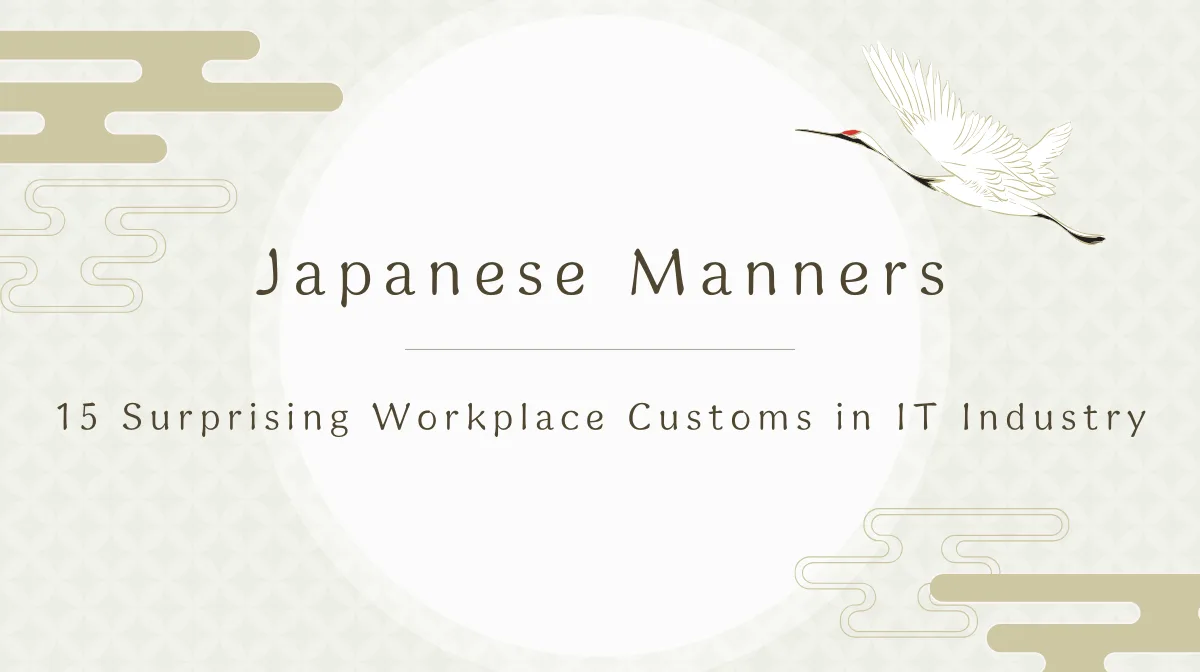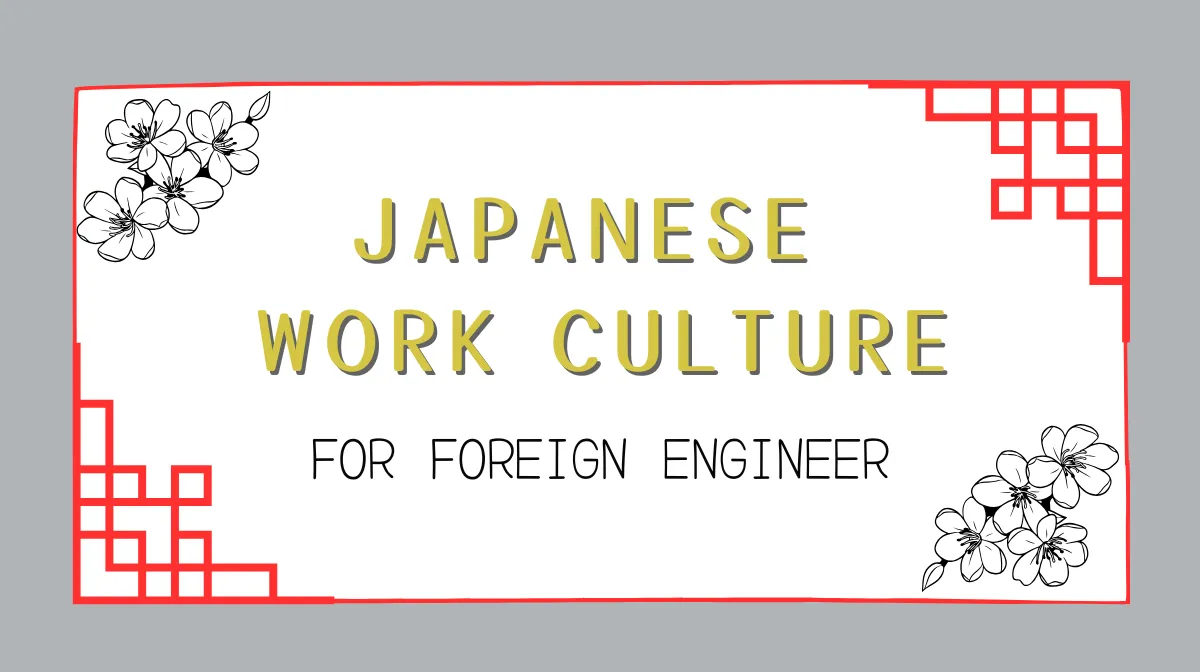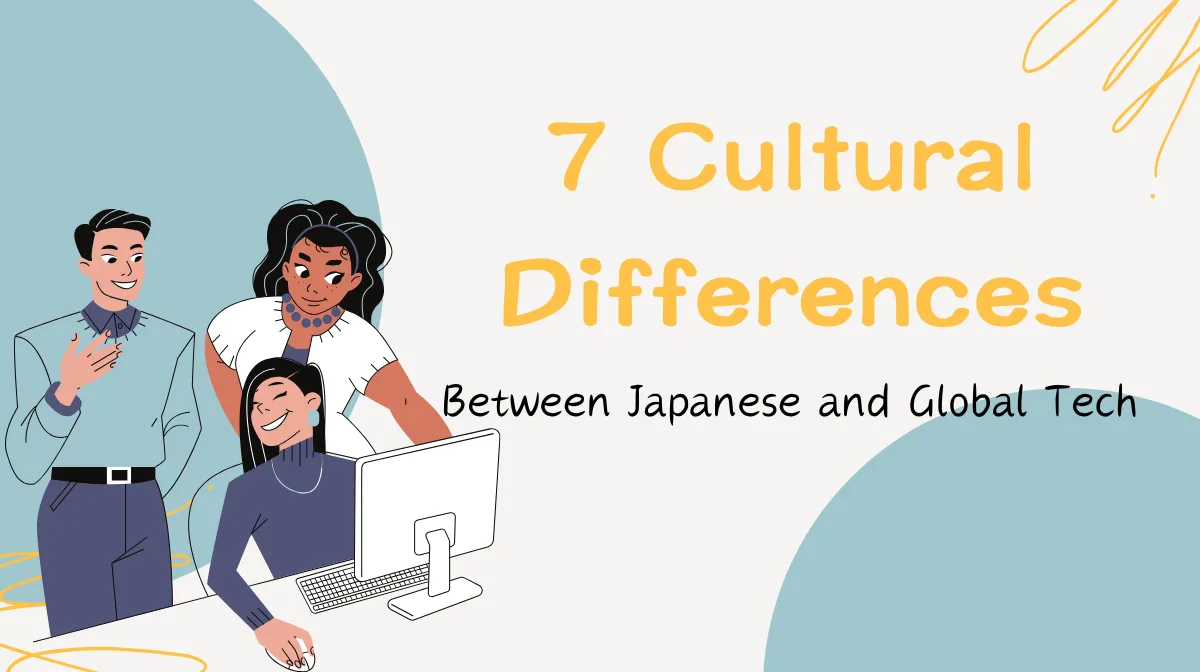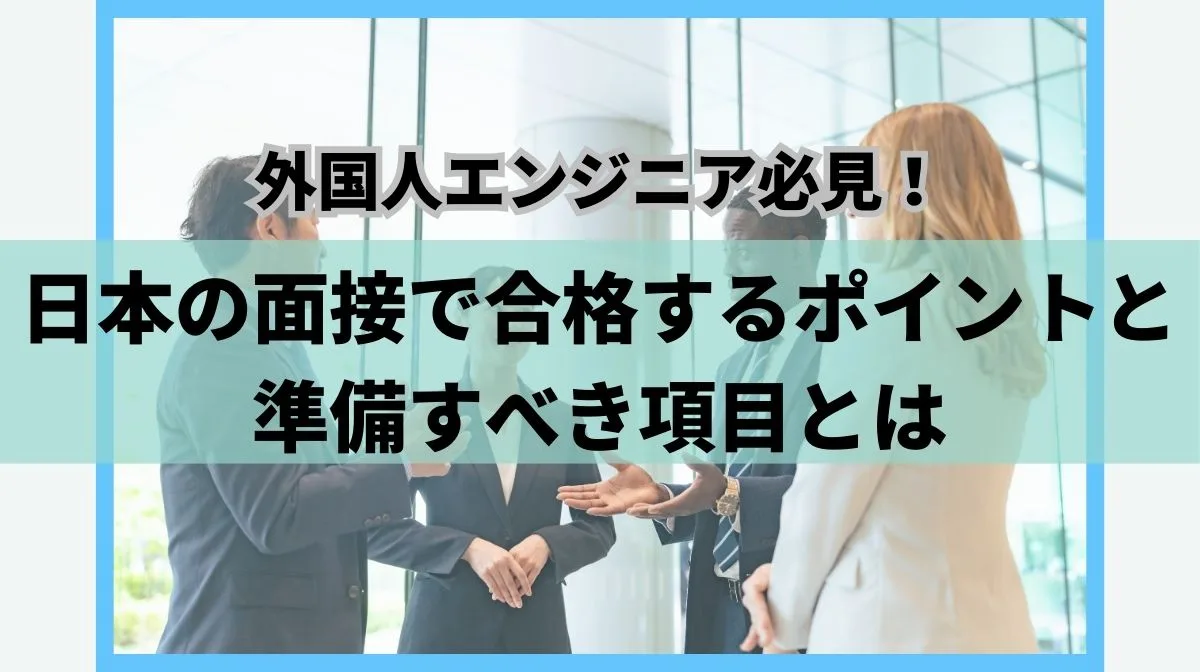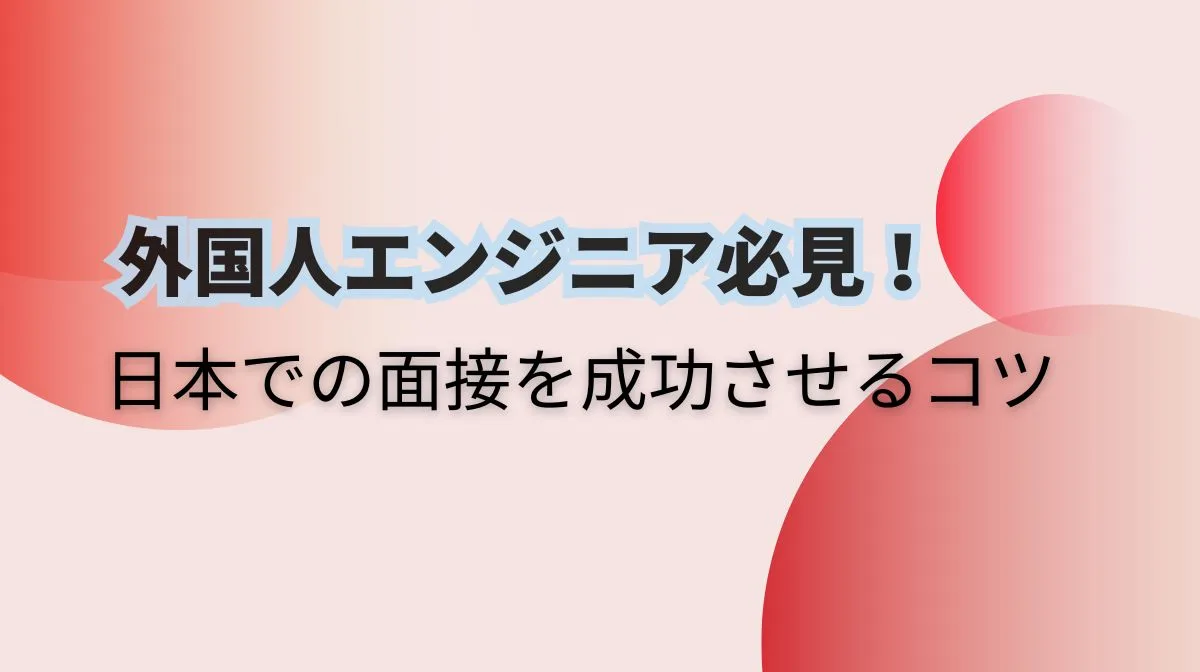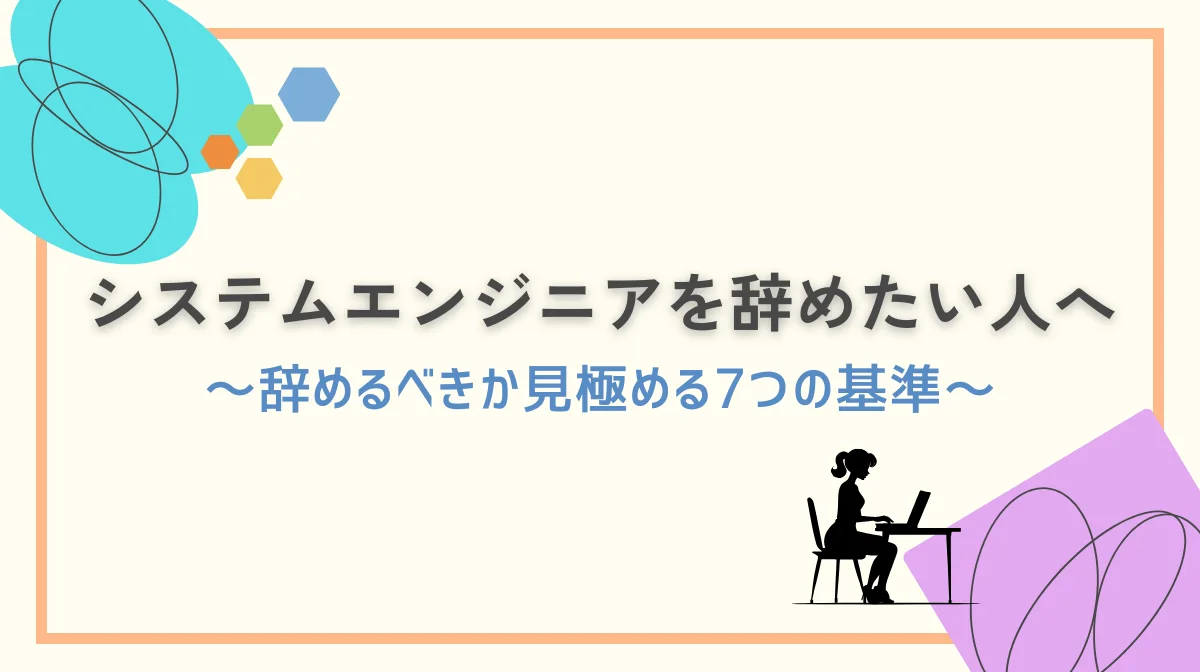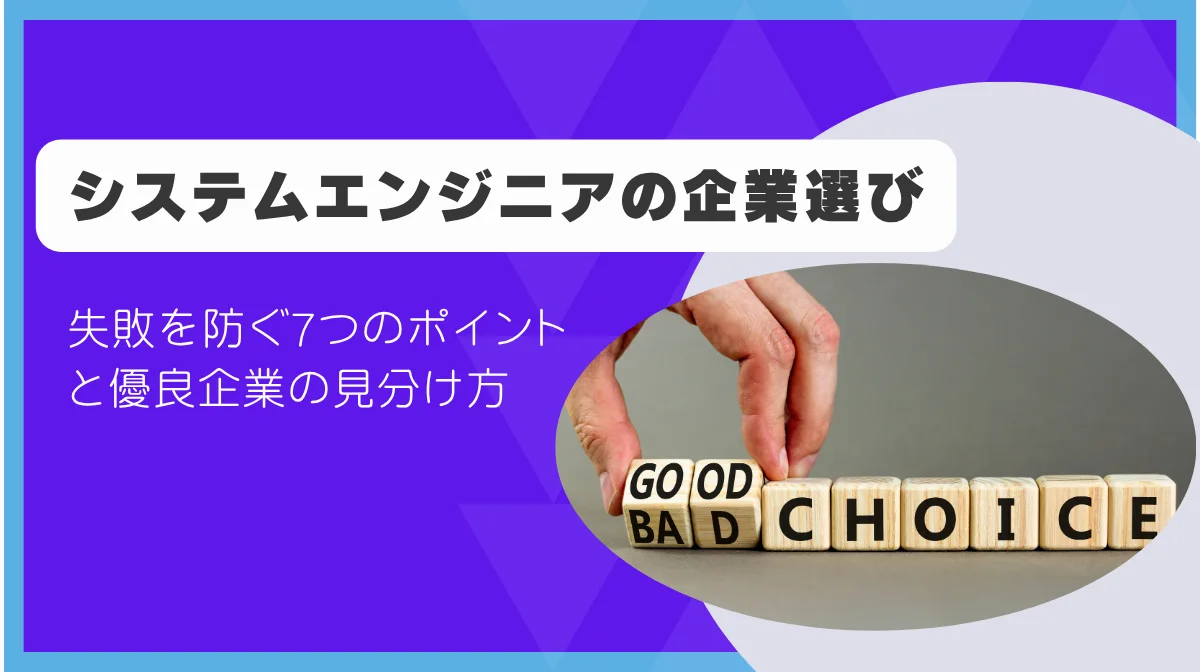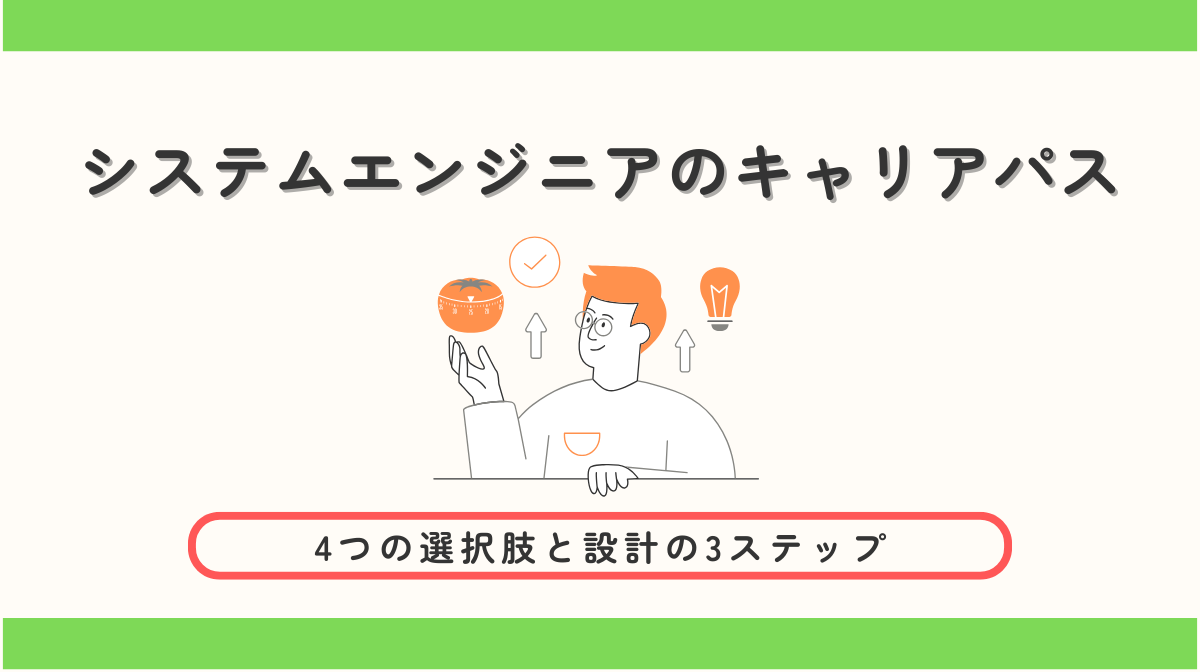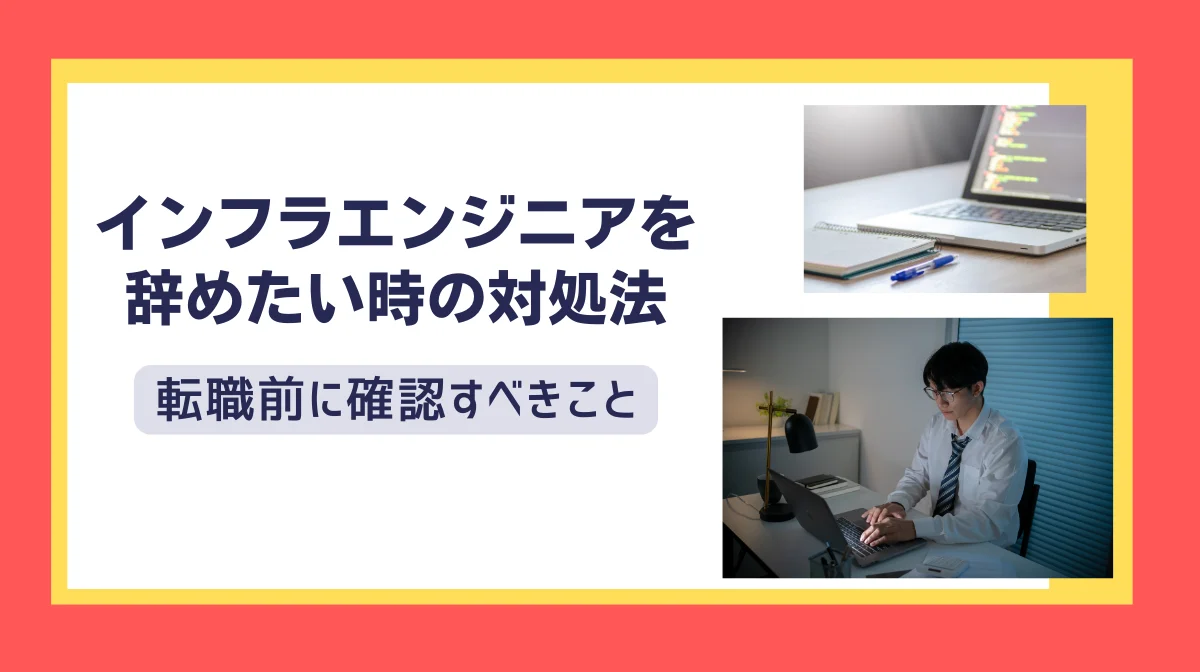With the globalization of the IT industry, opportunities for foreign engineers and Japanese people to work together are increasing.
However, Japan’s unique manners and customs can often cause surprise and confusion for foreign nationals.
This article introduces 15 Japanese manners that surprise foreign engineers in the IT industry, along with practical points for deepening cross-cultural understanding.
It’s packed with insights to promote mutual understanding and turn diversity into a strength.
1. Japanese Manners That Surprise Foreign Nationals and Their Background

As globalization progresses in the IT industry, Japanese tech companies are increasingly hiring foreign engineers.
However, Japan’s unique culture and manners can often cause surprise and confusion for foreign nationals.
Behaviors and values that Japanese people consider “natural” are actually unique to Japan and often differ from global standards.
Here, we’ll explain the manners that surprise foreign engineers in Japanese workplaces and their cultural background.
The Unique Behavioral Standards Created by Group Consciousness That Values “Wa” (Harmony)
The value of “wa wo motte toutoshi to nasu” (harmony is to be valued) that underlies Japanese society greatly influences the workplace environment in the IT industry as well.
For foreign engineers, especially those from Western countries, these behavioral standards based on group consciousness can be difficult to understand.
◇Manifestations of Group Consciousness
- Decision-making processes that prioritize team consensus over individual opinions
- Conformity pressure represented by “the nail that sticks out gets hammered down”
- Tendency to value cooperation over self-assertion
- Culture of supporting tasks outside one’s own responsibilities to prioritize overall project progress
Many foreign engineers wonder “Why don’t people clearly state their opinions?” or “Why are there no opposing views in meetings?”
While U.S. and European IT companies highly value individual expertise and innovative ideas, Japanese companies emphasize “team performance” and “overall project harmony”
The Importance of “Reading the Air” Culture and Non-Verbal Communication
In Japan’s business environment, the ability to “read the air” is sometimes valued as much as technical skills.
The culture of making appropriate judgments from surrounding situations without explicit instructions may be one of the most difficult concepts for foreign engineers to understand.
◆Situations for Reading the Air and Non-Verbal Communication
- Implicit rules for timing and content of remarks in meetings
- The need to understand the true intentions behind a supervisor’s vague instructions
- Reading people’s true feelings from facial expressions, silence, sighs, etc.
- Understanding the true meaning of euphemistic expressions like “sumimasen” (excuse me/sorry) and “chotto muzukashii kamoshiremasen” (it might be a bit difficult)
Foreign nationals often feel “I can’t understand things that aren’t verbalized” or “I want clear instructions”
For them, Japanese workplaces seem to have information flying around beyond words, and not being able to catch this creates communication gaps.
Cultural Gaps That Foreign Nationals Face in Japanese Workplaces
The cultural gaps that foreign engineers face in IT industry workplaces are diverse.
Even with technical expertise, it’s not uncommon to be confused by Japan’s unique business practices and implicit rules.
◇Main Cultural Gaps
- Indirect feedback (tendency to avoid direct evaluation or criticism)
- Opacity in decision-making processes (importance of behind-the-scenes negotiations and preliminary coordination)
- Strictness of “ho-ren-so” (report, contact, consult) and expectations for detailed progress reports
- Implicit expectations for overtime and after-work socializing like drinking parties
- Abundance of formal greetings and set phrases in emails and meetings
For example, there’s often a contradiction between the “frank feedback” culture in agile development and Japan’s “consideration for not embarrassing others”
Additionally, for foreign engineers accustomed to flat organizational structures, Japan’s hierarchical communication paths can sometimes seem inefficient.
2. Seven Unique Japanese Business Manners That Surprise Foreign Nationals

In IT industry business scenes, there are many unique customs beyond technical communication.
For foreign engineers, these customs can sometimes be incomprehensible and surprising.
Here, we’ll explain seven business manners that particularly surprise foreign nationals working at Japanese IT companies.
The Complexity of Distinguishing Between “Otsukaresama desu” and “Gokurousama desu”
The distinction between the most frequently exchanged greetings in Japanese offices, “Otsukaresama desu” and “Gokurousama desu” is difficult for foreign engineers to understand.
In IT companies especially, with frequent remote work and chat tool interactions, this greeting distinction becomes even more important.
◆Basic Rules for Distinction
- “Otsukaresama desu”
Used for colleagues or subordinates, or between members of the same project - “Gokurousama desu”
Used from superiors to subordinates, or to people outside one’s own team
The Ritual of Two-Handed Business Card Exchange and Confirmation
Business card exchange in business settings holds ceremonial importance in Japan. It’s an indispensable custom in IT industry initial business meetings and meetings as well.
For foreign nationals, this ceremonial nature of business card exchange is surprising. Unlike the casual business card exchange in Western customs, Japanese business cards are treated as the “alter ego” of the other person, requiring respect.
This cultural difference is prominently displayed in international conferences and business matching events at tech companies.
◇Business Card Exchange Etiquette
- Present business cards with both hands and receive the other person’s card with both hands
- Don’t immediately put away received cards; leave them on the table during conversation
- Check the card contents (position and affiliation) and use appropriate honorifics
Speaking Order in Meetings and Implicit Consensus-Building Processes
Japanese meetings have implicit rules for speaking order and expressing opinions.
Particularly in IT company project meetings and review sessions, these rules can confuse foreign engineers.
Even as agile development and scrum adoption progress, Japanese IT companies still emphasize “consensus of all members”
This differs greatly from the “constructive conflict” and “flat discussion” styles that overseas engineers are accustomed to, often leading to questions like “Why don’t people express opinions more freely?”
◆Implicit Meeting Rules
- Speaking may occur in order of rank or seniority
- Opposing opinions and problem-raising are done indirectly, not directly
- Behind-the-scenes negotiations are often conducted beforehand, making meetings places for reporting and confirmation
- Unanimous decisions are emphasized, and even minority opinions may hinder consensus building
Unique Expressions and Set Phrases in Internal Emails
Japanese business emails contain many formal and unique expressions. Particularly rigid expressions and seasonal greetings can seem complex to foreign nationals.
While English communication is increasing in the IT industry, these formats are still valued in Japanese emails.
For engineers who value programming clarity and efficiency, this “redundancy” and “ambiguity” can be a cultural shock.
◇Business Email Format Examples
- Stereotypical openings beginning with “Osewa ni natte orimasu” (Thank you for your continued support)
- Euphemistic expressions like “Gokakunin itadakemasu to saiwai desu” (We would appreciate your confirmation)
- Humble expressions like “Otesuu okake shimasu ga” (We apologize for the trouble)
The Concept of Kamiza/Shimoza and the Importance of Seating Order
The concept of “kamiza/shimoza” (upper/lower seats) seen in meeting rooms and restaurants is one of the complex manners for foreign nationals.
This concept is applied in Japanese IT companies during official meetings and business dinners with clients.
For foreign engineers accustomed to flat organizational culture, this strict seating concept is difficult to understand. They often have the simple question “Why can’t we just sit in comfortable seats?”
Particularly in startups that emphasize casualness, many foreign nationals feel uncomfortable with this custom.
◆Kamiza/Shimoza Basics
- Kamiza: Seats at the back of the room, far from the entrance, with walls behind
- Shimoza: Seats near the entrance, with backs facing the aisle
- Higher-ranking people sit in kamiza according to position and age
- Guests (clients, etc.) are guided to kamiza, higher than the host
Overtime Culture and “Invisible Pressure” Extending Stay Times
The overtime culture in Japanese IT companies is one of the customs that most surprises foreign engineers. Even without explicit instructions, an atmosphere arises where “I can’t leave because others aren’t leaving”
From the perspective of “work-life balance” and “performance-based evaluation” common in Western IT companies, this culture is incomprehensible.
The value difference that “staying long hours is valued more than work efficiency” creates a significant cultural gap for many foreign engineers.
However, attitudes toward overtime are gradually changing, with increasing movements toward global standards.
◇Characteristics of Overtime Culture
- Atmosphere where it’s difficult to leave as long as supervisors or seniors remain
- Feeling guilty about “leaving on time”
- Staying at the company longer than actual workload is evaluated as “working hard”
- “Invisible pressure” exists even with remote work and flextime systems
Drinking Party Culture and the Dilemma of Declining
Japan’s “nominication” (communication through drinking parties) culture plays an important role in building workplace relationships, but it can cause confusion for foreign nationals.
For engineers from cultures that value personal time, the concept of “having an obligation to spend time with colleagues after work” is unacceptable.
However, like overtime, this communication style is being reconsidered.
◆Key Points of Drinking Party Culture
- Participation may be implicitly expected as an extension of work
- Manners include serving supervisors and seniors drinks and ensuring glasses don’t become empty
- Conversations at drinking parties can affect the next day’s work
- Difficult to decline, and not participating may be seen as “uncooperative”
■ Related Reading
The following article explains the work and workplace culture for working at Japanese companies.
■日本でエンジニアとしてキャリアアップしたい方へ
海外エンジニア転職支援サービス『 Bloomtech Career 』にご相談ください。「英語OK」「ビザサポートあり」「高年収企業」など、外国人エンジニア向けの求人を多数掲載。専任のキャリアアドバイザーが、あなたのスキル・希望に合った最適な日本企業をご紹介します。
▼簡単・無料!30秒で登録完了!まずはお気軽にご連絡ください!
Bloomtech Careerに無料相談してみる
3. Eight Japanese Daily Life Manners That Confuse Foreign Nationals
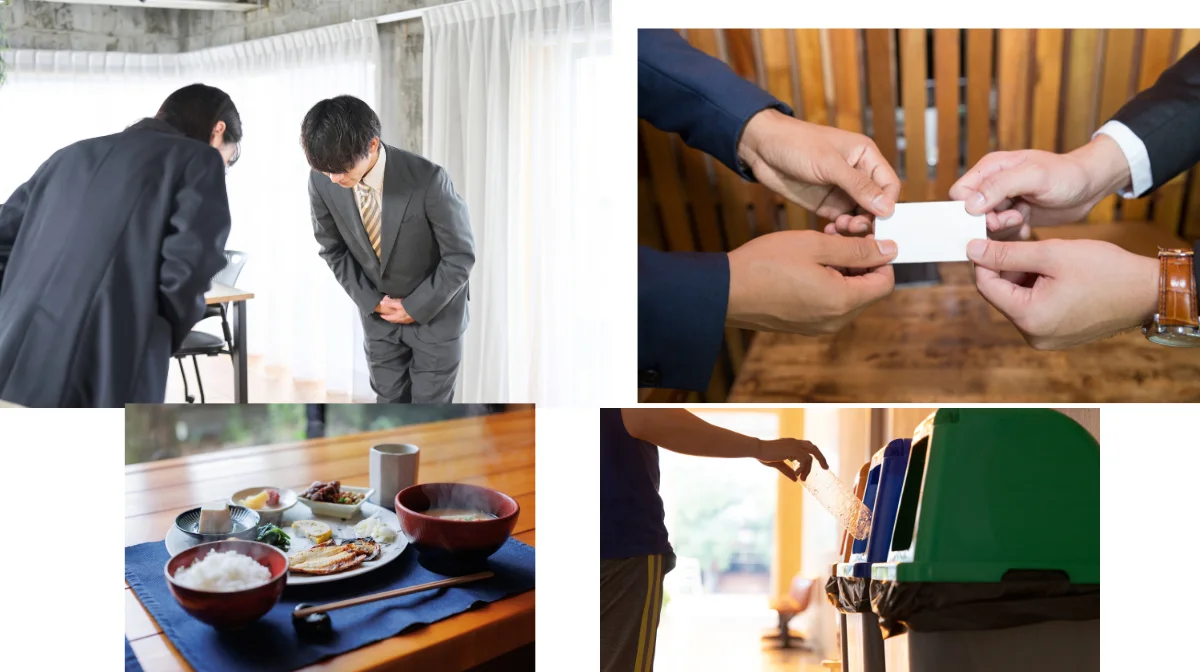
Not only in business scenes, but also in daily life, there are many uniquely Japanese manners that confuse foreign nationals.
Foreign nationals often express surprise at the following customs when adapting to life in Japan.
Understanding these can also lead to smoother workplace communication.
Types of Bowing and Meaning Differences by Depth
In Japan, people bow for greetings, gratitude, and apologies, but the meaning differs according to angle and duration.
For foreign nationals, the complexity of this non-verbal communication is surprising.
Particularly for engineers from Western countries, where hugs and handshakes are common, the detailed etiquette of bowing can be confusing.
Judging “how deep and how long to bow” is difficult for those unfamiliar with Japanese culture.
Types of Bowing
- Eshaku (about 15 degrees): Light greeting or gratitude
- Keirei (about 30 degrees): Normal greeting or business etiquette
- Saikeirei (45 degrees or more): Deep gratitude, apology, or expression of respect
Quietness on Trains and Buses and Mobile Phone Usage Restrictions
The quietness on Japan’s public transportation is a cultural characteristic that surprises many foreign nationals.
Particularly during urban rush hour on packed trains, silence is generally maintained even when passengers are in close contact.
With the increase in remote work in the IT industry, there may be situations where people want to join online meetings while commuting. However, in Japan, phone calls in public places are generally considered inconsiderate behavior, requiring consideration for others.
This “culture of quietness” comes from Japan’s value of “consideration for others”
Public Transportation Manners
- Phone calls are generally prohibited or significantly restricted (near priority seats, it’s recommended to turn off smartphones)
- Conversations should be kept quiet and minimized when possible
- Be careful about headphone sound leakage
- Avoid participating in remote meetings
The Diverse Uses of “Sumimasen” and Meaning Changes by Situation
The Japanese phrase “sumimasen” has diverse meanings beyond apology. The flexibility and multiple meanings of this word can confuse foreign nationals.
Foreign engineers are particularly surprised by the custom of using “sumimasen” to call out to people. In Western culture, they may feel uncomfortable saying “sumimasen” in situations where there’s no need to apologize.
Also, when asked at work “Sumimasen, kore onegai dekimasu ka?” (Excuse me, could you please do this?), they may wonder “Why are they apologizing?”
Usage Situations for “Sumimasen”
- Apology: “I’m sorry” when making mistakes
- Gratitude: Usage close to “Thank you”
- Calling out: “Excuse me” to store clerks or strangers
- Declining: Nuance of “I have to decline”
The Custom of Removing Shoes at Entrances and Indoor Shoe Rules
In Japan, there’s a custom of removing shoes when entering homes, apartments, and sometimes specific restaurants or offices. This culture is a fresh experience especially for foreign nationals from Western countries.
In IT company offices, there may be areas where shoes must be removed, such as relaxation spaces or Japanese-style meeting rooms.
For foreign engineers, judging “where to remove shoes” and “how to use different slippers” can be surprisingly difficult.
Shoe-Related Manners
- Remove shoes at the entrance and arrange them neatly
- After removing shoes, change into dedicated slippers or indoor shoes
- There are often dedicated slippers for toilets
- Basic rule is to remove slippers in tatami rooms
“Itadakimasu” Before Meals and Chopstick Usage Taboos
Japanese dining manners include many rules about greetings like “itadakimasu” and “gochisousama” and chopstick usage. These are interesting yet complex cultural elements for foreign nationals.
These manners can become important during work team lunches or business entertainment.
Particularly, taboos regarding chopstick usage are often related to funeral customs, and unknowingly rude behavior can occur.
Additionally, many foreign engineers may not be accustomed to using chopsticks themselves, which can add additional difficulty.
Key Dining Manners
- “Itadakimasu” before meals and “Gochisousama” after meals
- Custom of holding bowls while eating
- How to pass chopsticks (don’t pass food directly from chopsticks to chopsticks)
- Don’t stick chopsticks upright in food (especially white rice)
- Avoid poking, pointing, or picking with chopsticks
Complex Garbage Separation and Strict Collection Day Schedules
The complexity and strictness of Japan’s garbage separation system is one of the daily customs that most confuses foreign nationals.
Particularly for foreign engineers starting to live alone in Japan for the first time, this can be a major culture shock.
Garbage disposal methods vary greatly by region, so if not living in company dormitories or supported housing, adapting to this custom can be difficult and requires advance research.
Garbage Separation Characteristics
- Separation into multiple categories: burnable, non-burnable, recyclable, oversized garbage
- Different collection days and rules by region
- Many regions require using designated garbage bags
- Collection times are strict, and garbage won’t be collected if put out at wrong times
Reference: Immigration Services Agency: Living and Working Guidebook
“Omotenashi” Spirit Showing Consideration for Others
Japan’s “omotenashi” culture is a spirit that values meticulous consideration for guests and others.
This culture appears in small daily actions and becomes a fresh experience for foreign nationals.
This “omotenashi” spirit is also reflected in customer service at work and team support.
For foreign engineers from cultures that emphasize individualism and self-assertion, expectations to “understand without being told” and implicit demands to “understand without being told” can sometimes feel burdensome.
Expressions of Omotenashi
- Meticulous consideration for guests (providing tea, guiding seating positions, etc.)
- Actions that anticipate the other person’s position and situation
- Advance consideration to “not cause trouble”
- Custom of sensing others’ needs without words
Gift Selection and Customs of Wrapping and Reciprocation
Japan has many unique customs surrounding gift-giving that can surprise foreign nationals. Particularly gift exchanges in the workplace involve complex rules and expectations.
In IT companies, there are many gift-giving opportunities, such as souvenirs when visiting clients or seasonal greetings to supervisors and colleagues.
Also, when foreign engineers receive gifts from Japanese colleagues, not knowing reciprocation customs could be considered “rude”
Understanding the cultural background of these customs can lead to smoother responses.
Gift-Related Manners
- Custom of bringing souvenirs (when visiting or returning home)
- Emphasis on beautiful packaging and appearance
- Custom of giving return gifts (thank-you gifts)
- Seasonal gifts (ochugen, oseibo, etc.)
- Things not to give (items related to numbers “4” or “9”, white flowers, etc.)
4. Why Do Foreign Nationals Express Surprise? Unraveling Cultural Background Differences

Behind foreign nationals’ surprise at the uniquely Japanese manners mentioned above lie fundamental differences in cultural values and social structures.
Understanding these differences reveals why specific manners developed in Japan and why they’re difficult for foreign nationals to understand.
Particularly in the IT industry, where people often work between global standards and local culture, understanding these differences is important.
Collectivism vs. Individualism: Differences in Self-Positioning in Society
The contrast between Japan’s collectivism and foreign (especially Western) individualism is an important element underlying many manner differences. In the IT industry, this difference affects project management and team composition.
For example, Japanese IT companies may suppress individual opinions to emphasize “overall team harmony” while Western IT companies tend to highly value “individual expertise” and “innovative ideas”
This value difference leads to surprise in meeting discussion methods and decision-making processes.
Characteristics of Collectivism and Individualism
- Collectivism (Japan): Prioritizes group harmony, individuals viewed as part of the group
- Individualism (West, etc.): Emphasizes individual rights and freedom, groups viewed as collections of individuals
- In collectivism, not disturbing “wa” (harmony) is considered a virtue
- In individualism, self-assertion and uniqueness are valued
Contrast Between High-Context and Low-Context Cultures
Differences in communication styles are also major factors causing foreign nationals to be confused by Japanese manners.
The difference between “high-context culture” and “low-context culture” according to cultural anthropologist Edward Hall’s classification also affects daily communication among IT engineers.
In IT development sites, this difference can affect requirements definition and feedback processes.
For example, when a Japanese engineer says “chotto muzukashii kamoshiremasen” (it might be a bit difficult), it often actually means “impossible,” but engineers from low-context cultures may interpret it as “difficult but possible”
This culture of “reading between the lines” causes communication misunderstandings.
Characteristics of Context Cultures
- High-context culture (Japan)
Values context, situations, and implicit understanding not expressed in words - In high-context cultures, the ability to “read the air” is valued as an important social skill
- Low-context culture (U.S., etc.)
Values explicit verbal communication, with implied meanings being secondary - In low-context cultures, “speaking clearly” is valued as an expression of honesty
Reference: Japan Translation Center: Low Context, High Context
Communication Style Differences Created by Hierarchical vs. Egalitarian Consciousness
The difference between hierarchical consciousness rooted in Japanese society and egalitarian consciousness valued in many foreign countries (especially Western) is also an important element creating manner differences.
In the IT industry, this difference affects processes like intra-team decision-making and code reviews.
For example, Japanese IT companies tend to value senior engineers’ opinions, while Western IT companies often discuss based on technical validity regardless of years of experience.
Cultural Characteristics of Hierarchy and Equality
- Hierarchical consciousness (Japan)
Recognition of clear hierarchical relationships based on age, position, years of service, etc. - In hierarchical societies, linguistic distinctions like honorific and polite language develop
- Egalitarian consciousness (West, etc.)
Emphasizes formal equality and prioritizes evaluation based on ability and contribution - In egalitarian societies, casual communication is often the norm
Cultural Differences in Values Toward Time and Commitments
Values toward time and commitments also differ greatly by culture. Japan’s “punctuality” culture is one element that surprises many foreign nationals.
In global IT development projects, this difference in time perception affects schedule management and attitudes toward deadlines.
Japanese manners based on “on-time” values (strict adherence to meeting start times, absolute view of deadlines) can feel rigid to engineers from cultures with more flexible time concepts.
Differences in Time Perception
- Monochronic time culture (Japan, Germany, etc.)
Views time as linear and limited resource, emphasizes strict time management - In monochronic time cultures, there’s a custom of apologizing even for one-minute lateness
- Polychronic time culture (Southern Europe, Latin America, etc.)
Flexible time concept of advancing multiple matters in parallel - In polychronic time cultures, human relationships and situations may be prioritized over time
■日本でエンジニアとしてキャリアアップしたい方へ
海外エンジニア転職支援サービス『 Bloomtech Career 』にご相談ください。「英語OK」「ビザサポートあり」「高年収企業」など、外国人エンジニア向けの求人を多数掲載。専任のキャリアアドバイザーが、あなたのスキル・希望に合った最適な日本企業をご紹介します。
▼簡単・無料!30秒で登録完了!まずはお気軽にご連絡ください!
Bloomtech Careerに無料相談してみる
5. Five Points for Foreign Nationals to Work Smoothly in Japanese Workplaces

Here are points for foreign engineers working at Japanese IT companies to overcome difficulties arising from cultural differences and work more smoothly.
Understanding the “Why” Behind Manners and Learning Underlying Values
When confused by uniquely Japanese manners and customs, it’s important to understand the underlying values rather than simply memorizing rules. Knowing “why” enables more natural adaptation.
Approaches to Understanding Values
- Learn basic Japanese cultural values like “valuing harmony” and “consideration for others”
- Don’t be afraid to ask Japanese colleagues “why do you do that?”
- Deepen knowledge through books and videos about Japanese history and culture
- Understand not just surface behaviors but the intentions and expectations behind those behaviors
For example, consensus-oriented decision-making processes in meetings aren’t simply time-consuming processes, but important steps to secure cooperation in later implementation stages.
Understanding such backgrounds reveals the value of practices that seemed “inefficient”
Practicing Clear Communication and Developing Confirmation Habits
Japan’s high-context culture contains many meanings and expectations not expressed in words. To respond to this, actively confirming and reducing ambiguity is effective.
Tips for Clear Communication
- Summarize what you understood in your own words for confirmation (“Is my understanding that… correct?”)
- When receiving vague instructions, ask for specific examples
- After email or chat exchanges, reconfirm orally
- Develop the habit of summarizing and sharing meeting minutes and decisions after meetings
- Learn ways to decline without saying “NO” (“I’ll consider it” “How about another option?” etc.)
In Japanese IT companies especially, “taking proper communication rather than relying on implicit understanding” is important.
While Japanese people have the habit of reading between the lines, foreign engineers can prevent misunderstandings by focusing on clear communication.
Finding Balance Between Cultural Adaptation and Self-Expression
Finding balance between adapting to Japanese workplaces and maintaining one’s authentic self is also important.
You don’t need to accept everything as is; explore ways to adapt while utilizing your strengths.
Tips for Finding Balance
- Distinguish between non-negotiable values and areas where you can respond flexibly
- Identify situations where you can leverage your own culture’s strengths
- Show the value of diversity while adapting to the Japanese environment
- Have a perspective that views differences as team strengths rather than conflicts
- Gradually deepen adaptation levels over time
For example, an engineer from the U.S. doesn’t need to completely abandon open feedback culture.
Rather, while understanding Japan’s indirect communication, they can demonstrate the value of constructive feedback.
The important thing is not to view “being different” itself as problematic, but to find optimal collaboration methods while deepening mutual understanding.
Building Trust in the Workplace Through Cultural Understanding via Japanese Language Learning
Language and culture are closely related. Learning Japanese not only broadens communication possibilities but is also important for deepening understanding of Japanese culture and building trust relationships.
Effective Japanese Learning Approaches
- Prioritize learning technical terms and set expressions related to work
- Master expressions used daily, starting with morning greetings and words of gratitude
- Understand keigo (honorific language) basics and use them in appropriate situations
- Find language exchange partners or in-company language partners
- Establish daily learning habits using online learning tools and apps
Even without perfect Japanese, the attitude of trying to learn leads to trust-building with Japanese colleagues.
Also, since the IT industry often uses English, creating an environment where people learn each other’s languages rather than avoiding communication due to language barriers is also effective.
Promoting Workplace Adaptation Through Relationship Building with Mentors and Colleagues
In the process of adapting to Japanese workplaces, having good mentors and trustworthy colleagues provides significant help.
Building support networks within the workplace enables efficient learning of many implicit rules and customs.
Approaches to Relationship Building
- Utilize formal or informal mentoring systems
- Value interaction opportunities during lunch and break times
- Expand conversations to include interests and hobbies beyond work
- Participate in social events like drinking parties when necessary for relationship building
- Develop habits of expressing gratitude through words and actions
Particularly in the IT industry, relationship building often begins with questions about technical problems.
Also, when there are senior foreign employees, learning from their experiences is very beneficial. Approaching with the attitude of “understanding differences in each other’s cultural rules and customs” can build more constructive relationships.
6. Understanding “Culture” Through Japanese Manners That Often Surprise
Cultural background differences sometimes create misunderstandings and friction, but by understanding and respecting each other, diversity becomes a team strength.
It’s important to understand uniquely Japanese manners not merely as “rules” but together with their underlying values, and to maintain an attitude of learning from each other’s cultures.
In the globalizing IT industry, cross-cultural communication ability itself becomes an important skill. Let’s aim to create workplaces where we can recognize and respect each other’s differences.

